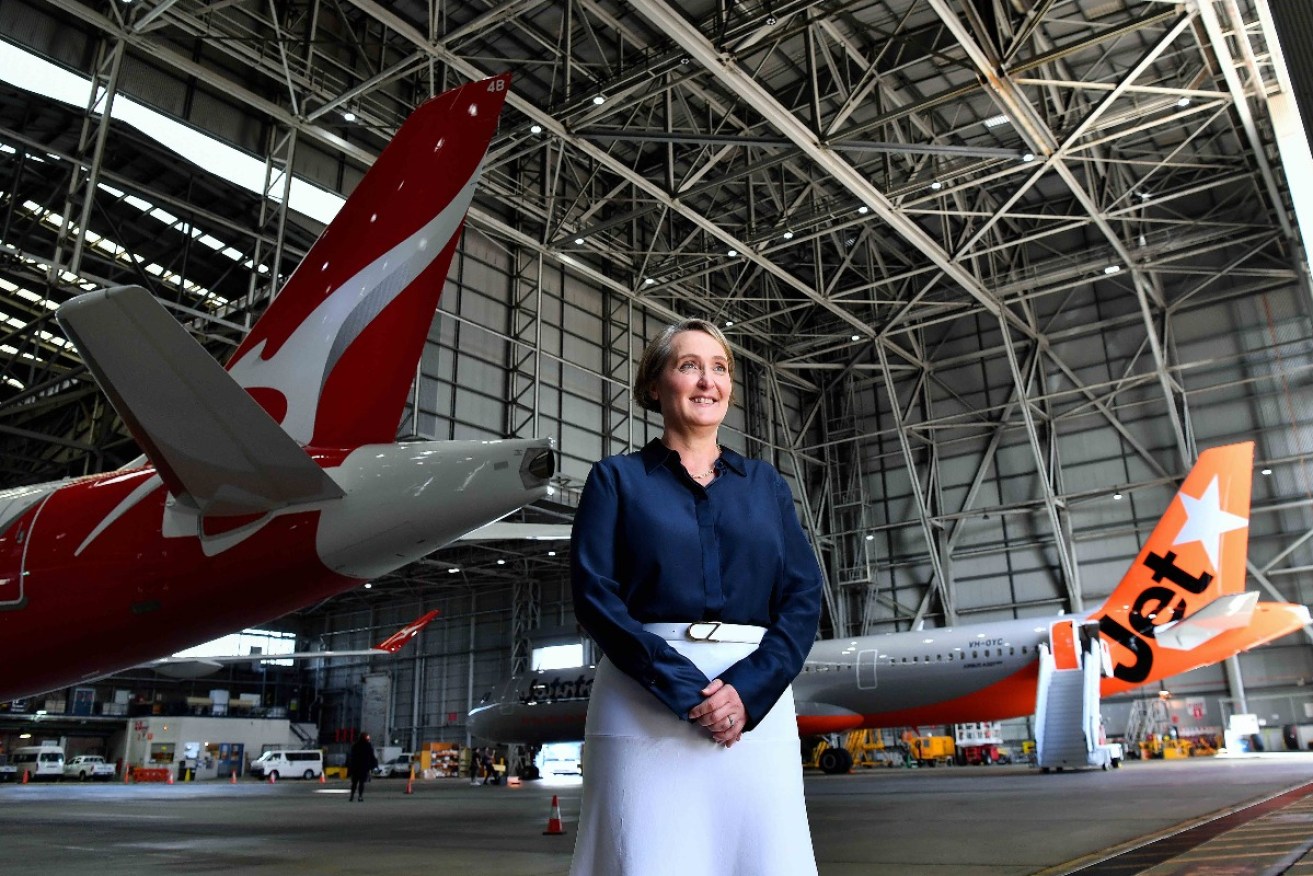Qantas blames 13 per cent drop in first-half profit on lower fares
Qantas says fare reductions are behind a $183 million reduction in its first-half profit, as it announces measures to upgrade features for passengers.

Qantas Group Chief Executive Officer Vanessa Hudson announced the group's FY24 half year results at Sydney Airport. Photo AAP
Qantas says lower fares contributed to a 13 per cent drop in its underlying profit for the half-year, while revealing new cabin interiors for Qantaslink and plans to offer fast, free WiFi on international flights.
The airline on Thursday reported it made a $1.25 billion underlying profit after tax for the six months to December, down $183 million from a year ago.
Revenue was up 12.3 per cent to $11.1 billion.
Lower fares cut Qantas’ profit by about $600 million, although this was mostly offset by increased flying, which boosted profit by $485 million.
Fares are down more than 10 per cent since peaking in late 2022.
The airline will not pay a dividend but announced another $400 million share buyback, on top of the $500 million one announced in August that’s nearly complete.
The report is the first under new chief executive Vanessa Hudson, who said the airline’s customer satisfaction levels had bounced back strongly since December.
“We know that millions of Australians rely on us and we’ve heard their feedback loud and clear,” she said.
Hudson took over from Alan Joyce in September when the high-profile CEO moved forward his retirement after becoming a figure of controversy.
The airline had weathered a High Court loss over illegal job outsourcing, allegations it sold tickets for cancelled flights and news of executive pay increases amid mass COVID-19 redundancies.
Qantas announced QantasLink had taken delivery of the first two of 29 Airbus A220 jets that will replace its ageing fleet of Boeing 717s.
The 137-seat A220s will offer a greater sense of space and the largest windows of any single-aisle aircraft for the passengers flying them between cities such as Melbourne, Hobart, Brisbane and Canberra, as well as Coffs Harbour and Launceston.
“It’s a much bigger cabin, it’s much quieter on the inside, and no noise is much less fatiguing for our customers,” Hudson said.
The A220s have double the range of the 717s, will burn less fuel, have more overhead locker space and will feature fast, free WiFi, Qantas said.
The airline said it had ordered another eight Airbus A321XLRs for domestic flights, bringing its order to 28. The 200-seat jets will progressively replace its 737s when they begin arriving in early 2025.
Qantas said it will begin offering fast, free WiFi on international flights, a service that will be progressively switched on as its jets are retrofitted starting towards the end of this year.
The service was being offered through global broadband provider Viasat, whose satellites were now advanced enough that passengers would be able to stream movies and watch live sports, Qantas said.
“We know that staying connected is important to customers on international flights and we’ve deliberately waited for the same high-speed connection we use domestically to be available on our overseas routes,” Hudson said.
The service will come to Qantas’ Airbus A330s this year, its A380s and Boeing 787s next year and Jetstar’s widebody fleet from 2026.
Qantas said delays in the certification of the first Airbus A350 ultra-long-haul aircraft it is using for its “Project Sunrise” would push back the start of its direct flights from Sydney and Melbourne to London and New York by six months, to the third quarter of 2026.
But Hudson said strong uptake of the airline’s direct flights from Perth to London and Rome and Paris had bolstered the case for the Project Sunrise flights.
“The demand we’re seeing from customers to want to fly point to point, it is stronger than ever,” she said.
“So we’re more than ever confident that the business case still stands and that the aircraft’s six month delay is not a concern.”
– AAP




